
The National Gallery of Australia (NGA), formerly the Australian National Gallery, is the national art museum of Australia as well as one of the largest art museums in Australia, holding more than 166,000 works of art. Located in Canberra in the Australian Capital Territory, it was established in 1967 by the Australian Government as a national public art museum. As of 2022 it is under the directorship of Nick Mitzevich.
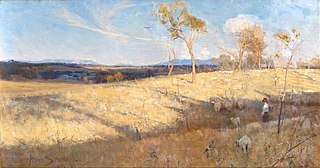
The Heidelberg School was an Australian art movement of the late 19th century. It has been described as Australian impressionism.
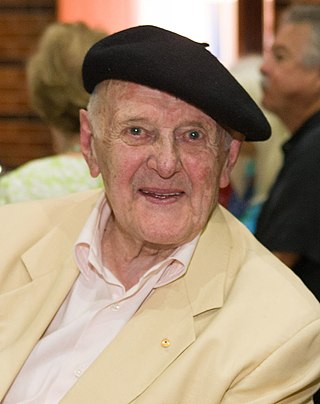
John Henry Olsen AO OBE was an Australian artist and winner of the 2005 Archibald Prize. Olsen's primary subject of work was landscape.
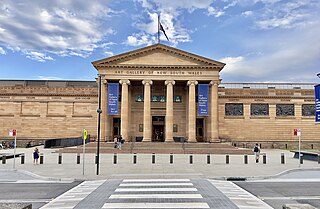
The Art Gallery of New South Wales (AGNSW), founded as the New South Wales Academy of Art in 1872 and known as the National Art Gallery of New South Wales between 1883 and 1958, is located in The Domain, Sydney, Australia. It is the most important public gallery in Sydney and one of the largest in Australia.
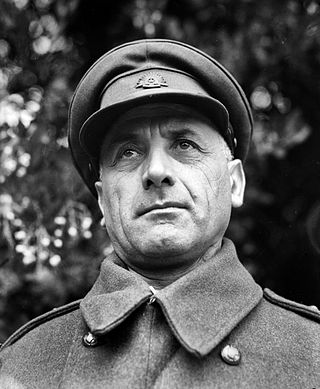
Sali Herman was a Swiss-born Australian artist, one of Australia's Official War Artists for the Second World War.

Elioth Lauritz Leganyer Gruner was an Australian artist. A successor of the plein air Heidelberg School tradition in Australian art, Gruner is known for his high-key impressionist landscapes and his ability to capture the ephemeral effects of light. According to Norman Lindsay, Gruner "painted the purest light that ever has been seen on a bit of canvas".

Frederick William Leist was an Australian artist. During the First World War, he was an official war artist with Australian forces in Europe.
George Feather Lawrence (1901–1981) was born in Sydney, Australia and for many years was regarded as one of the foremost painters in the impressionist style. He studied under Julian Rossi Ashton at the famous Sydney Art School in the old Queen Victoria Building; and later in London and Paris.
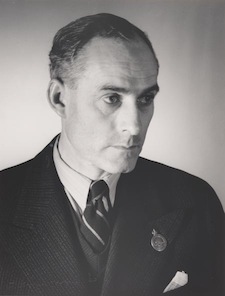
Adrian George Feint was an Australian artist. He worked in various media, and is noted for his bookplate designs.
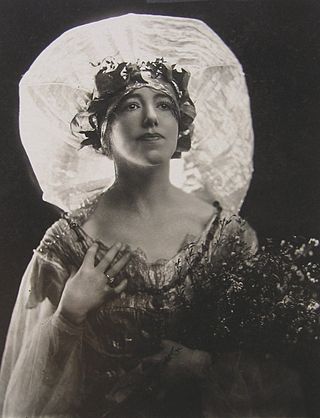
Hilda Rix Nicholas was an Australian artist. Born in the Victorian city of Ballarat, she studied under a leading Australian Impressionist, Frederick McCubbin, at the National Gallery of Victoria Art School from 1902 to 1905 and was an early member of the Melbourne Society of Women Painters and Sculptors. Following the death of her father in 1907, Rix, her only sibling Elsie and her mother travelled to Europe where she undertook further study, first in London and then Paris. Her teachers during the period included John Hassall, Richard Emil Miller and Théophile Steinlen.

Jean Bellette was an Australian artist. Born in Tasmania, she was educated in Hobart and at Julian Ashton's art school in Sydney, where one of her teachers was Thea Proctor. In London she studied under painters Bernard Meninsky and Mark Gertler.
Across the Black Soil Plains is a 1899 painting by Australian artist George Washington Lambert. The landscape depicts a team of draft horses pulling a wagon heavily laden with wool bales. Lambert's painting was awarded the Wynne Prize in 1899.
Aida Tomescu is an Australian contemporary artist who is known for her abstract paintings, collages, drawings and prints. Tomescu is a winner of the Dobell Prize for Drawing, the Wynne Prize for Landscape and the Sir John Sulman Prize, by the Art Gallery of New South Wales.
Margo Lewers (1908–1978) was an Australian interdisciplinary abstract artist who worked across the media of painting, sculpture, tapestry, ceramics and the domestic arts. She was renowned for a number of major public commissions and for her landscaping and interior design for the family home at Emu Plains. Her early compositions explored colour and formal geometric abstraction; her work became more fluid and expressionist by the early 1960s. She showed extensively in Australia and in several international travelling exhibitions. She won at least fourteen awards and prizes. The Penrith Regional Gallery and Lewers Bequest now stands on her property at Emu Plains.

Howard Hinton was an Australian art patron and benefactor. A thwarted artist due to shortsightedness, he visited many of the great galleries of Europe in his youth. At age 24 he migrated to Australia and quickly associated with leading artists of the Heidelberg School and the bohemian artists' camps around Sydney Harbour in the 1890s. He built a successful career in shipping and, along with a family inheritance, used his moderate wealth to support waves of Australian artists in the first half of the twentieth century. Through extensive donations to the Art Gallery of New South Wales and particularly the Armidale Teachers' College he became one of the greatest benefactors in Australian art history.

The Julian Ashton Art School was established by Julian Ashton in 1890 as the "Academy Julian", has been an influential art school in Australia. For a long time it was known as the Sydney Art School.
The Royal Art Society of New South Wales, or Royal Art Society of NSW, was established in 1880 as the Art Society of New South Wales by a group of artists including Arthur and George Collingridge, with the aim of creating an Australian school of painting, and separate from the NSW Academy of Art. Their first exhibition was held in the Garden Palace. In 1902 the Society merged with the Society of Artists and received royal assent from King Edward VII to add "Royal" to their name.

Morning Light is a 1916 painting by the Australian artist Elioth Gruner. The painting depicts a small herd of dairy cows in a grassy field in the morning with a man, the farmer, in the foreground. Hailed as the high point of [his] Emu Plains series" and "one of his greatest masterpieces", Morning Light was awarded the Wynne Prize in 1916.

Djon Mundine is an Aboriginal Australian artist, curator, activist and writer. He is a member of the Bundjalung people of northern New South Wales. He is known for having conceived the 1988 work Aboriginal Memorial, on display at the National Gallery of Art in Canberra.
The Australian Academy of Art was a conservative Australian government-authorised art organisation which operated for ten years between 1937 and 1946 and staged annual exhibitions. Its demise resulted from opposition by Modernist artists, especially those associated with the Contemporary Art Society, though the influence of the Academy continued into the 1960s.














